“], “filter”: { “nextExceptions”: “img, blockquote, div”, “nextContainsExceptions”: “img, blockquote, a.btn, a.o-button”} }”>
Heading out the door? Read this article on the new Outside+ app available now on iOS devices for members!
>”,”name”:”in-content-cta”,”type”:”link”}}”>Download the app.
What better way to preview 2024 than to ask Velo’s editorial team for their predictions, hot-takes, and wild and weird theories for the season to come?
Stay tuned through this week for our thoughts on tech, training, culture, and racing from the worlds of road, gravel, E-biking, and beyond. See all of the Velo Predictions for 2024 here.
—-
Alvin here, and it’s my turn with the crystal ball. I’m pulling every ounce of clairvoyance I have in my body to make predictions about what road and gravel bike tech trends we’ll see in 2024.
Some of these predictions come from my reading of the tea leaves, particularly the ones about new groupsets in 2024. Some other ones though are me paying attention to consumer trends and what the market has to offer. Others? Honestly, vibes.
Will your next road bike have a 1x drivetrain and far narrower, flared handlebars? No idea, but I wouldn’t be surprised to see anything on this list happen!
Bent-in brake hoods are out, narrow gravel bars are in
I already saw the writing on the wall about bent-in brake levers. Riders want to get narrower and the easiest way to do it is to tilt your brake levers inward on your drop bar bike. Now that the UCI has banned the lever position, I bet we’re going to see more narrow flared drop bars on road bikes, just like a gravel bike.
BMC’s been a bit cheeky in making their new Teammachine R more aerodynamic by using a 36 cm wide bar across every frame size. At a minimum, that is about 4 cm narrower than the narrowest bar width on the similarly-built BMC Teammachine SLR road bike, and up to 8 cm narrower than the largest bikes.
Those bars have that 36 cm measurement at the tops, but a 42 mm measurement at the drops due to a fairly wide flare. The two vastly different positions give you an aero benefit while you’re riding on the hoods and some added control in the drops that might otherwise be lost with a narrower bar.
The easiest way to replicate this bar position on a road bike is to grab the narrowest gravel handlebar you can. A narrower handlebar can be a cheap way to go faster, but a narrow gravel bar adds some extra leverage for sprinting in the drops.
Some have already dipped their toes into running narrower bars than they have in years past, but I predict we’re going to start seeing riders who aren’t pros (or wannabe pros) start trying out the same thing. Hopefully, integrated cockpits won’t make their experiment too expensive!
2024 will be the year of 1x drivetrain adoption on the road
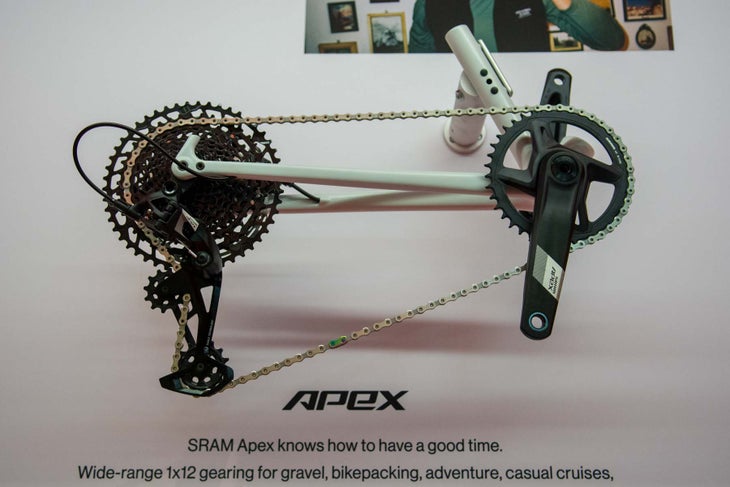
Little by little, we’ve seen 1x drivetrains in the WorldTour. Nowhere have they been more prominent than at Visma-Lease a Bike (formerly Jumbo-Visma), where riders like Wout van Aert elected to use a 1x drivetrain in the Tour de France. I suspect we’ll start seeing it more often on more normal road bikes.
There are obvious downsides to 1x drivetrains, namely around having the right gear ratios and the drivetrain efficiency losses that come with 1x chain lines. But for people not looking for marginal gains on their bike, using a 1x drivetrain makes a whole more sense.
I still think that 1x drivetrains will stand as an outlier on pro race bikes, though Classified might have something to say about that. The real change will be that we’ll start to see 1x drivetrains on off-the-shelf road bikes.
Sram Apex AXS – a volume drivetrain for off-the-shelf bikes – is only available with a 1x drivetrain. Most new cyclists would prefer to not worry about cross-chaining if given the choice, and unless they’re picky about their gearing, a well-considered 12-speed cassette with wide gear ratios is more than sufficient for most people.
Microshift Sword has made waves with its surprisingly good Sword groupset. While it’s positioned as a gravel-only groupset, the gearing and ergonomics would work well for road cyclists seeking value over outright speed.
1x drivetrains are still the edgy option on a gravel bike; it’s only a matter of time before 1x becomes the edgy off-the-shelf option on a road bike.
Gravel bikes will officially be separated into categories
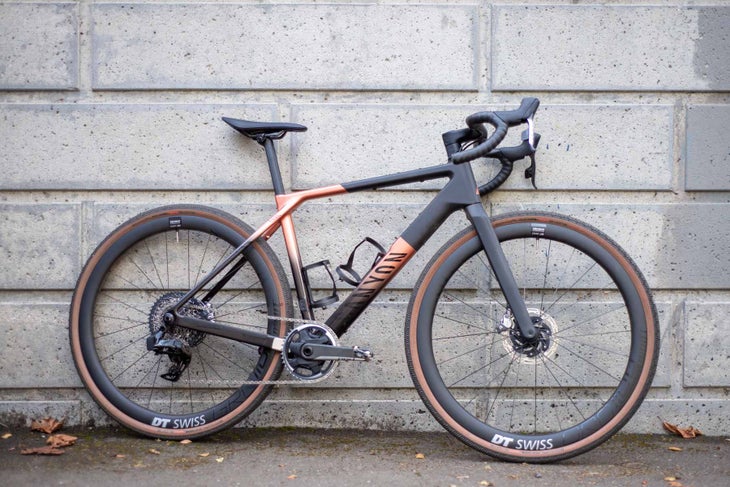
It’s 2024. Your gravel bike isn’t just a 90’s mountain bike made from modern materials. That is unless it’s a Commencal 365, in which case it totally is. And it’s not just a road bike with just barely wide enough tires. That is unless it’s a Ventum GS1, in which case it totally is.
How will they be categorized, you ask? I propose two delineations: performance gravel bikes, and adventure gravel bikes. I never said these delineations would roll off the tongue!
Folks looking to compete at increasingly competitive gravel events look more and more for bikes with low weight, just enough tire clearance to fit a 40 or 45 mm tire with room for mud, and some form of aero advantage. Bikes already in this spectrum include the BMC Kaius, Canyon Grail, Specialized Crux (despite the round tube sets, it is seen as a fast bike), and others.
Then comes the adventure bikes, which offer wider clearance, more upright body positioning, and a greater array of mounts. You’ll likely find that these bikes will come with options for some sort of vibration damping and are generally much more accommodating to different kinds of terrain. These are the gravel bikes for people who are just looking to get out there and possibly load up their bikes once a year for some overnight camping.
What happens at the entry level? I predict that they’re gonna stick to adventure bike design. Road bikes only start to stratify at the mid-range and top end of the spectrum. Most entry-level road bikes tend to lean toward the endurance and all-road side of the spectrum in regard to fit and handling. The entry-level side of gravel bikes is already there: approachable handling, upright fit geometry, and a feature set as wide as possible to appeal to more people. These are essentially adventure gravel bikes.
We’re already starting to see the distinction between these two kinds of bikes. 2024 will become the year that these names become both industry and consumer names to separate the two, and brands that don’t distinguish their gravel bike into one of these categories will start to lose out.
You’re probably going to see your first aero sensor this year
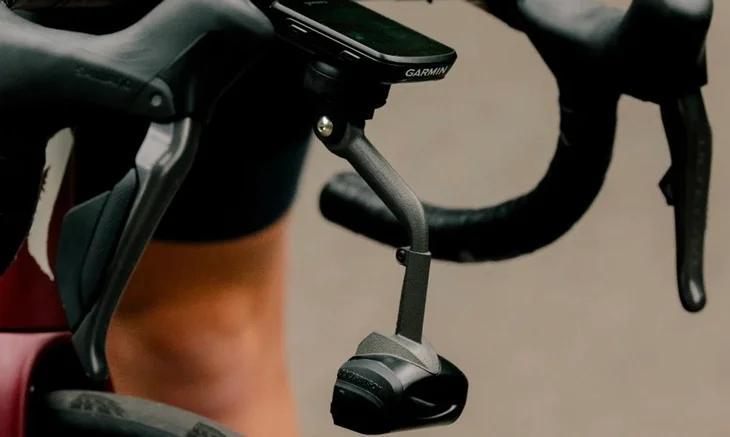
Power meters used to be expensive and exotic. Carbon wheels used to be expensive, exotic, and impractical outside of race days. Today? They’re requirements on top-tier bikes and increasingly common on choices on other bikes. I think aero sensors will eventually fall into that category, and first-adopter types will start to put them on their bikes, too.
An aero sensor – notably the aptly-named Aerosensor or the Velocomp AeroPod– can see what the fastest position is for you in real time. You might be able to put out more power in your most comfortable position, but if you’re sitting up like a windsail, it won’t be the most efficient way to get around. Likewise, you can get in the lowest CdA position but you’re not producing power, the position won’t make sense for more than split moments.
As you change your position, you can see your coefficient of aerodynamic drag (CdA) change in real time. It looks at data from your power meter and speed sensor, and compares it with wind speed, wind angle, and altitude data to calculate a CdA that they say is effective with 0.1 percent accuracy.
There are a lot of variables that mess with an aero sensor. Hitting the brakes messes up the data. Heavy crosswinds can mess up the data. A car passing as you ride along will mess it up. It’s finicky and for a select few, and that’s even before detailing its cost. But there is real data to be found here for regular people looking to improve their sprint, their positioning on the bike for endurance and ultra riding, and elsewhere.
Is a new SRAM Red drivetrain around the corner?
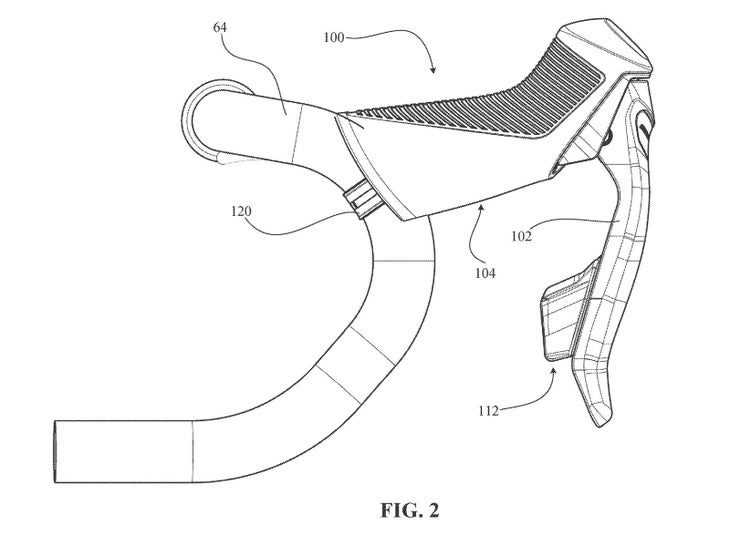
This is an easy one, right? Possibly the worst-kept secret in the cycling tech industry is the next generation of SRAM Red AXS. We’ve seen leaks of it even a year ago, and we dove deep to find detailed patent records showing what the new levers will look like.
Here’s what I predict: 12-speed gearing will continue for compatibility with the previous-generation AXS drop bar drivetrains. Wider range 2x gearing with a bigger 10-36T cassette will come as well. The shifters will be a major change, with a longer lever body, and auxiliary buttons for a second place to shift gears or control your bike computer.
I’ll even predict some of the product copy: “The new SRAM Red AXS front derailleur takes everything we’ve learned from Transmission to deliver the most direct, precise, and fast front shifting you’ve ever experienced.”
Is a new Shimano electronic gravel groupset coming, too?
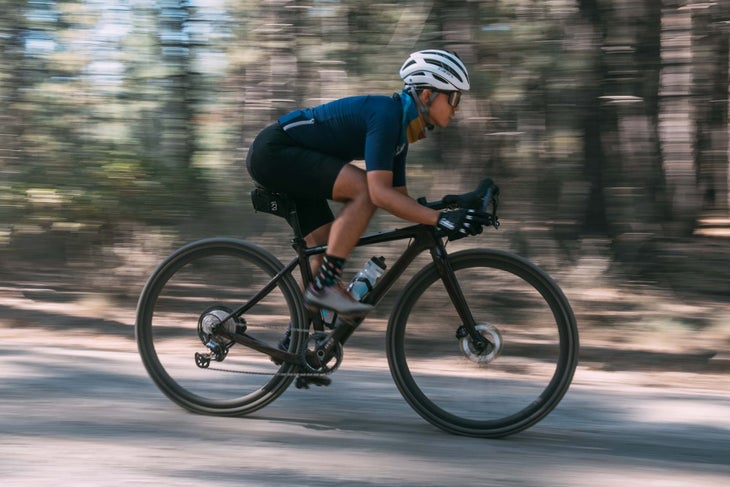
Shimano released a new GRX 12-speed mechanical drivetrain last year, bringing well-considered gearing to their 1x drivetrains and more refined ergonomics. In typical Shimano form, if they release a mechanical version of a drivetrain, they will likely release an electronic version too.
I predict that Shimano will release an electronic version of their updated gravel groupset. Things like gearing, chains, and cranksets were shared between 11-speed Shimano groupsets; considering how much is shared between current 12-speed 105 Di2 and mechanical groupsets, I expect that components like gearing, chains, and cranksets will be shared with Shimano GRX 12-speed mechanical.
That means an update to 12-speed gearing to bring it in line with most of Shimano’s 1x drivetrain. 1x and 2x drivetrains will likely continue with the same 10-45t and 10-51t gearing options, as well as 2x drivetrain options shared with GRX mechanical drivetrains. Further, I predict that GRX Di2 will adopt the wired-less approach of other Di2 drivetrains, with wireless shifters and a battery tied to both derailleurs.
Shimano is traditionally methodical when it comes to product releases, so I don’t expect anything unique to GRX Di2 that isn’t already offered on other Di2 drivetrains. When is it coming, however? No clue. If it falls in line with GRX mechanical, we could see it at Unbound Gravel as we did last year.

Michael Johnson is a tech enthusiast with a passion for all things digital. His articles cover the latest technological innovations, from artificial intelligence to consumer gadgets, providing readers with a glimpse into the future of technology.






/cdn.vox-cdn.com/uploads/chorus_asset/file/23951261/VRG_Illo_N_Barclay_5_apple.jpg)
